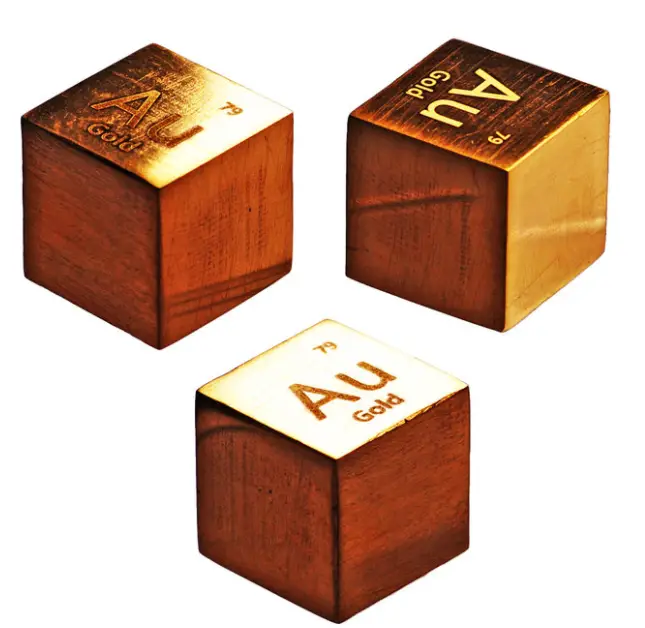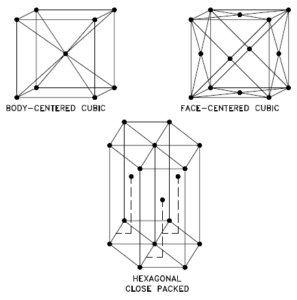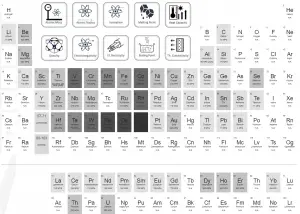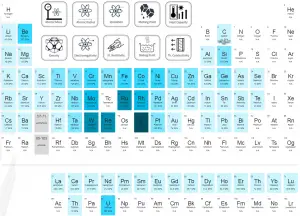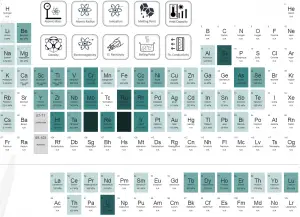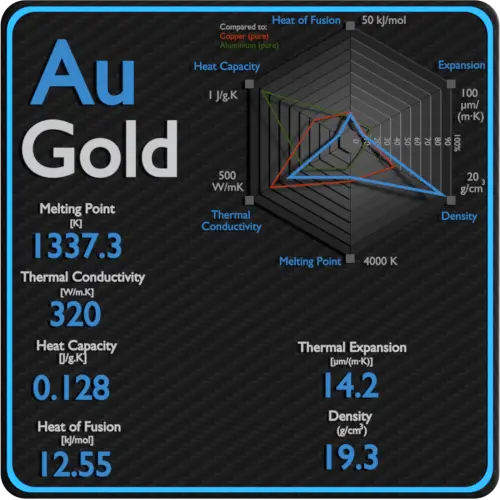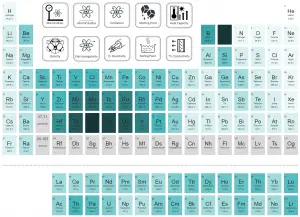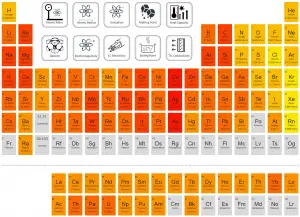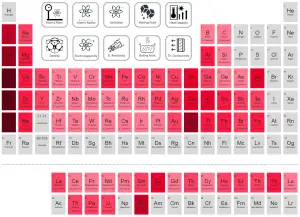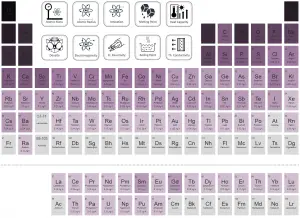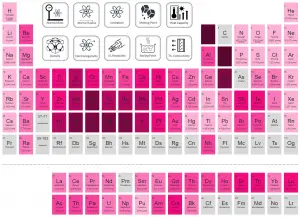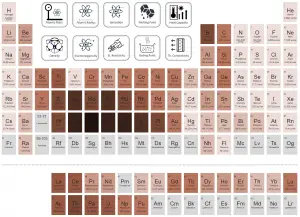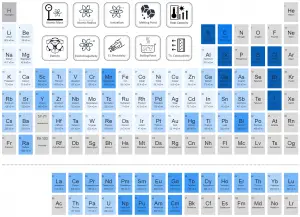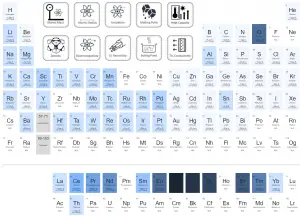About Gold
Gold is a bright, slightly reddish yellow, dense, soft, malleable, and ductile metal. Gold is a transition metal and a group 11 element. It is one of the least reactive chemical elements and is solid under standard conditions. Gold is thought to have been produced in supernova nucleosynthesis, from the collision of neutron stars.
Summary
| Element | Gold |
| Atomic number | 79 |
| Element category | Transition Metal |
| Phase at STP | Solid |
| Density | 19.3 g/cm3 |
| Ultimate Tensile Strength | 220 MPa |
| Yield Strength | 205 MPa |
| Young’s Modulus of Elasticity | 79 GPa |
| Mohs Scale | 2.75 |
| Brinell Hardness | 190 MPa |
| Vickers Hardness | 215 MPa |
| Melting Point | 1064 °C |
| Boiling Point | 2970 °C |
| Thermal Conductivity | 320 W/mK |
| Thermal Expansion Coefficient | 14.2 µm/mK |
| Specific Heat | 0.128 J/g K |
| Heat of Fusion | 12.55 kJ/mol |
| Heat of Vaporization | 334.4 kJ/mol |
| Electrical resistivity [nanoOhm meter] | 22.14 |
| Magnetic Susceptibility | −28e-6 cm^3/mol |
Applications of Gold
Gold is used extensively in jewellery, either in its pure form or as an alloy. About 75% of all gold produced is used in the jewelry industry. Pure gold is too soft to stand up to the stresses applied to many jewelry items. Craftsmen learned that alloying gold with other metals such as copper, silver, and platinum would increase its durability. The term ‘carat’ indicates the amount of gold present in an alloy. 24-carat is pure gold, but it is very soft. 18- and 9-carat gold alloys are commonly used because they are more durable. Gold’s high malleability, ductility, resistance to corrosion and most other chemical reactions, and conductivity of electricity have led to its continued use in corrosion resistant electrical connectors in all types of computerized devices (its chief industrial use). Gold is also used in infrared shielding, colored-glass production, gold leafing, and tooth restoration. Only 10% of the world consumption of new gold produced goes to industry, but by far the most important industrial use for new gold is in fabrication of corrosion-free electrical connectors in computers and other electrical devices.
Production and Price of Gold
Raw materials prices change daily. They are primarily driven by supply, demand and energy prices. In 2019, prices of pure Gold were at around 49900 $/kg.
Hard rock gold mining extracts gold encased in rock, rather than fragments in loose sediment, and produces most of the world’s gold. In 2017, the world’s largest gold producer by far was China with 440 tonnes. The second-largest producer, Australia, mined 300 tonnes in the same year, followed by Russia with 255 tonnes.
Source: www.luciteria.com
Mechanical Properties of Gold
Strength of Gold
In mechanics of materials, the strength of a material is its ability to withstand an applied load without failure or plastic deformation. Strength of materials basically considers the relationship between the external loads applied to a material and the resulting deformation or change in material dimensions. In designing structures and machines, it is important to consider these factors, in order that the material selected will have adequate strength to resist applied loads or forces and retain its original shape. Strength of a material is its ability to withstand this applied load without failure or plastic deformation.
For tensile stress, the capacity of a material or structure to withstand loads tending to elongate is known as ultimate tensile strength (UTS). Yield strength or yield stress is the material property defined as the stress at which a material begins to deform plastically whereas yield point is the point where nonlinear (elastic + plastic) deformation begins.
See also: Strength of Materials
Ultimate Tensile Strength of Gold
Ultimate tensile strength of Gold is 220 MPa.
Yield Strength of Gold
Yield strength of Gold is 205 MPa.
Modulus of Elasticity of Gold
The Young’s modulus of elasticity of Gold is 205 MPa.
Hardness of Gold
In materials science, hardness is the ability to withstand surface indentation (localized plastic deformation) and scratching. Brinell hardness test is one of indentation hardness tests, that has been developed for hardness testing. In Brinell tests, a hard, spherical indenter is forced under a specific load into the surface of the metal to be tested.
Brinell hardness of Gold is approximately 190 MPa.
The Vickers hardness test method was developed by Robert L. Smith and George E. Sandland at Vickers Ltd as an alternative to the Brinell method to measure the hardness of materials. The Vickers hardness test method can be also used as a microhardness test method, which is mostly used for small parts, thin sections, or case depth work.
Vickers hardness of Gold is approximately 215 MPa.
Scratch hardness is the measure of how resistant a sample is to permanent plastic deformation due to friction from a sharp object. The most common scale for this qualitative test is Mohs scale, which is used in mineralogy. The Mohs scale of mineral hardness is based on the ability of one natural sample of mineral to scratch another mineral visibly.
Gold is has a hardness of approximately 2.75.
See also: Hardness of Materials
Gold – Crystal Structure
A possible crystal structure of Gold is face-centered cubic structure.
In metals, and in many other solids, the atoms are arranged in regular arrays called crystals. A crystal lattice is a repeating pattern of mathematical points that extends throughout space. The forces of chemical bonding causes this repetition. It is this repeated pattern which control properties like strength, ductility, density, conductivity (property of conducting or transmitting heat, electricity, etc.), and shape. There are 14 general types of such patterns known as Bravais lattices.
See also: Crystal Structure of Materials
Crystal Structure of Gold

Thermal Properties of Gold
Gold – Melting Point and Boiling Point
Melting point of Gold is 1064°C.
Boiling point of Gold is 2970°C.
Note that, these points are associated with the standard atmospheric pressure.
Gold – Thermal Conductivity
Thermal conductivity of Gold is 320 W/(m·K).
The heat transfer characteristics of a solid material are measured by a property called the thermal conductivity, k (or λ), measured in W/m.K. It is a measure of a substance’s ability to transfer heat through a material by conduction. Note that Fourier’s law applies for all matter, regardless of its state (solid, liquid, or gas), therefore, it is also defined for liquids and gases.
Coefficient of Thermal Expansion of Gold
Linear thermal expansion coefficient of Gold is 14.2 µm/(m·K)
Thermal expansion is generally the tendency of matter to change its dimensions in response to a change in temperature. It is usually expressed as a fractional change in length or volume per unit temperature change.
Gold – Specific Heat, Latent Heat of Fusion, Latent Heat of Vaporization
Specific heat of Gold is 0.128 J/g K.
Heat capacity is an extensive property of matter, meaning it is proportional to the size of the system. Heat capacity C has the unit of energy per degree or energy per kelvin. When expressing the same phenomenon as an intensive property, the heat capacity is divided by the amount of substance, mass, or volume, thus the quantity is independent of the size or extent of the sample.
Latent Heat of Fusion of Gold is 12.55 kJ/mol.
Latent Heat of Vaporization of Gold is 334.4 kJ/mol.
Latent heat is the amount of heat added to or removed from a substance to produce a change in phase. This energy breaks down the intermolecular attractive forces, and also must provide the energy necessary to expand the gas (the pΔV work). When latent heat is added, no temperature change occurs. The enthalpy of vaporization is a function of the pressure at which that transformation takes place.
Gold – Electrical Resistivity – Magnetic Susceptibility
Electrical property refers to the response of a material to an applied electric field. One of the principal characteristics of materials is their ability (or lack of ability) to conduct electrical current. Indeed, materials are classified by this property, that is, they are divided into conductors, semiconductors, and nonconductors.
See also: Electrical Properties
Magnetic property refers to the response of a material to an applied magnetic field. The macroscopic magnetic properties of a material are a consequence of interactions between an external magnetic field and the magnetic dipole moments of the constituent atoms. Different materials react to the application of magnetic field differently.
See also: Magnetic Properties
Electrical Resistivity of Gold
Electrical resistivity of Gold is 22.14 nΩ⋅m.
Electrical conductivity and its converse, electrical resistivity, is a fundamental property of a material that quantifies how Gold conducts the flow of electric current. Electrical conductivity or specific conductance is the reciprocal of electrical resistivity.
Magnetic Susceptibility of Gold
Magnetic susceptibility of Gold is −28e-6 cm^3/mol.
In electromagnetism, magnetic susceptibility is the measure of the magnetization of a substance. Magnetic susceptibility is a dimensionless proportionality factor that indicates the degree of magnetization of Gold in response to an applied magnetic field.


